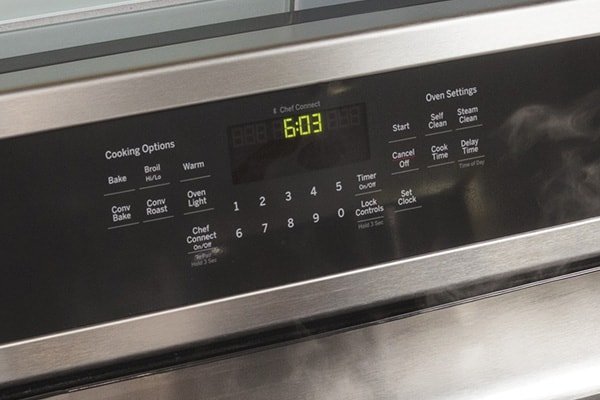
To put it simply, the F1 error code on a GE oven or range typically signals an issue with the oven’s internal components—most often related to the electronic oven control (EOC) or the touchpad. Think of it like when your smartphone suddenly freezes or displays an error message. Generally, the device is alerting you that something isn’t working quite right. While this doesn’t mean your oven is a ticking time bomb, it does suggest that some maintenance might be needed. So, how dangerous is it, and what should you do next? Let’s delve into that!
Understanding the F1 Error Code
Error codes in appliances can feel like trying to understand a foreign language. The F1 error code, in particular, is your oven’s way of signaling distress, often tied to issues with either the oven’s control board or the keypad. Imagine the control board as the brain of your oven, relaying all commands and ensuring everything works in harmony. If the brain isn’t functioning correctly, or if its connection to the keypad isn’t working right, it could result in the F1 error.
In many cases, the F1 error arises from a failing electronic oven control board. This component manages the oven’s various functions, similar to how a conductor leads an orchestra. If an internal malfunction occurs, such as a short circuit or a failing link within the elements, the control board struggles to perform its duties, hence the error code.
Sometimes, the problem could also stem from the touchpad. Just like how a faulty button on your remote control can make it hard to change the channel, a malfunctioning keypad can prevent your oven from receiving commands properly. Pressing buttons might yield no response, or worse, an incorrect behavior from the oven.
If you encounter an F1 error, first take a deep breath—it usually isn’t a catastrophe. The next step is to try resetting your oven by turning off its power for a few minutes. This can often clear temporary glitches. If the error persists, however, it may be time to consult a professional for further diagnosis and repair.
Is It Safe to Continue Cooking?
Here’s the deal: while an F1 error isn’t immediately dangerous, it signals that something is amiss with your oven’s electronics. It’s a bit like when your car’s check engine light comes on. You can still drive to your destination, but you know it’s wise to have it checked soon to prevent potential problems.
Continuing to use an oven displaying an F1 error might not pose an urgent safety hazard, but there are risks. The oven could behave unpredictably—turning on or off without warning, or failing to heat evenly. These inconsistencies might ruin your culinary creations or even lead to more serious malfunctions down the line.
Safety should always be your top priority. If your oven is acting unpredictably, consider temporarily switching to alternative cooking methods. Why not try using a trusted slow cooker or an air fryer for your meals until the oven issue is resolved? This way, you avoid potential hazards while still enjoying home-cooked dishes.
To prevent utility waste or further complications, it’s wise to schedule an inspection with a certified technician. They can assess and rectify the issue, ensuring your oven returns to its reliable self.
Preventative Measures and Next Steps
Now, let’s talk about prevention. You’d probably agree that avoiding issues is way better than dealing with them later. Routine maintenance of your GE oven can help fend off pesky error codes like F1. Think of it like regular dental check-ups—catching a cavity early means less pain and hassle later.
Regularly inspect and clean your oven’s components, particularly around the keypad and control board. Grease and grime can accumulate over time, leading to potential connectivity issues. A gentle wipe with a soft cloth can work wonders.
Another handy tip is to ensure your oven is up-to-date with the latest firmware updates, if applicable. Just as you’d update software on your computer or phone, keeping your oven’s system current can prevent glitches and enhance performance.
If you’ve been wrestling with persistent error codes or your oven isn’t operating as it should, don’t hesitate to reach out for professional help. They’re like the superheroes of home appliances, swooping in to save the day with their expertise.
In conclusion, while seeing an F1 error on your GE oven isn’t what any home cook wants, it doesn’t spell disaster. Armed with the right knowledge and a bit of maintenance, you can ensure your oven remains a trusty companion in your culinary adventures. Happy cooking!